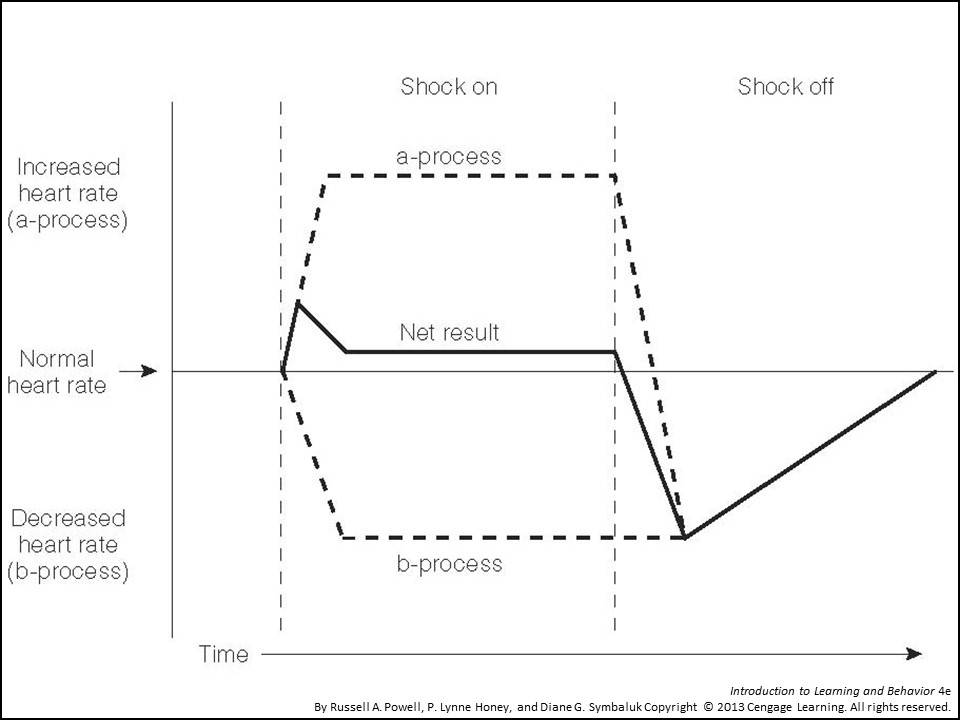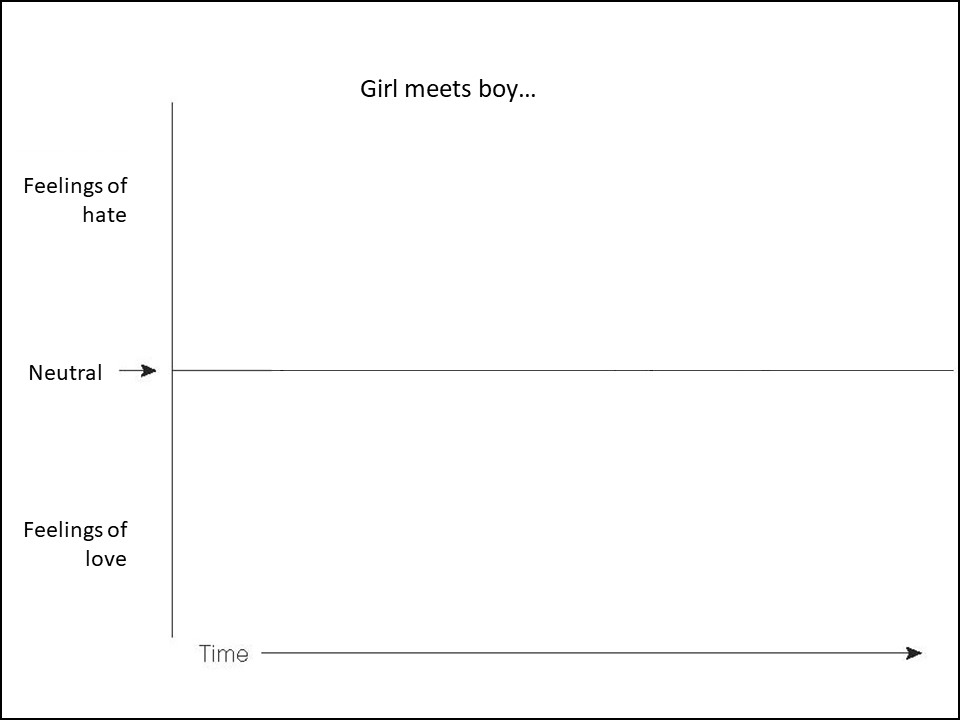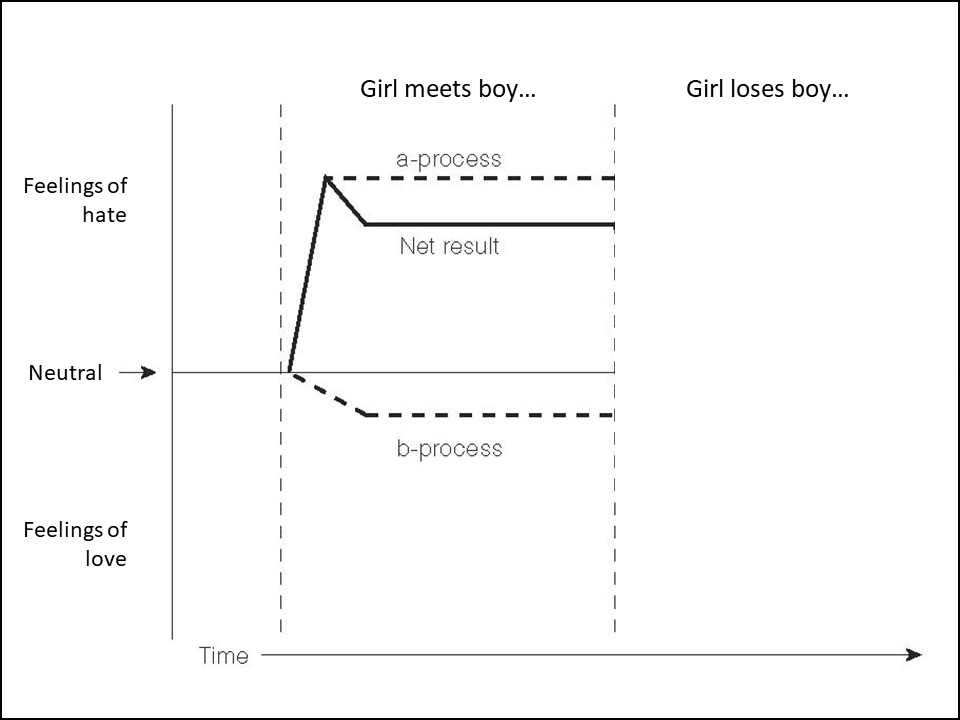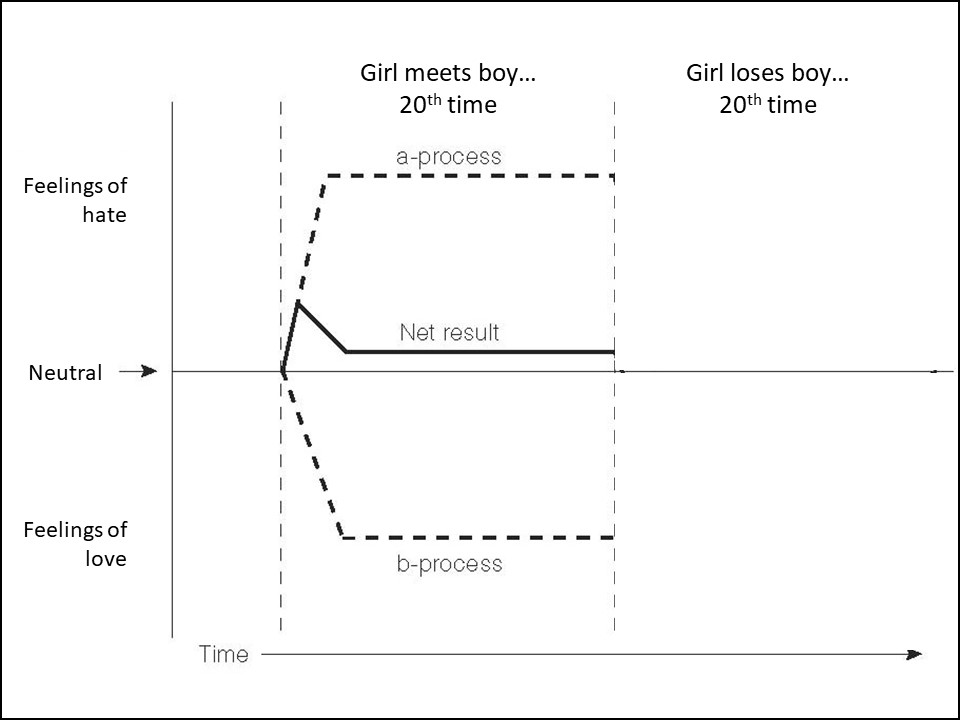Introduction
 Romantic comedies, or rom-coms, have long captivated audiences with their predictable yet enjoyable storylines. One often-used storyline is “hate at first sight”, where girl meets boy, girl and boy hate each other, girl and boy spend time together, girl loses boy, girl and boy fall in love. But have you ever wondered why the structure of so many rom-coms seems to follow this specific pattern? The answer lies in psychology, particularly the opponent process theory of emotion. Here, we will explore the opponent process theory, illustrate its basic principles, and apply it to unravel the underlying explanation behind the “hate at first sight” structure of rom-coms.
Romantic comedies, or rom-coms, have long captivated audiences with their predictable yet enjoyable storylines. One often-used storyline is “hate at first sight”, where girl meets boy, girl and boy hate each other, girl and boy spend time together, girl loses boy, girl and boy fall in love. But have you ever wondered why the structure of so many rom-coms seems to follow this specific pattern? The answer lies in psychology, particularly the opponent process theory of emotion. Here, we will explore the opponent process theory, illustrate its basic principles, and apply it to unravel the underlying explanation behind the “hate at first sight” structure of rom-coms.
The Opponent Process Theory
The opponent process theory of emotion suggests that strong emotional responses are followed by an opposite emotion. This theory relies on habituation-like and sensitization-like processes to explain the after-effects of intense emotional experiences. For instance, after experiencing fear, one might later feel fearless, or after great happiness, a period of profound sadness may follow. The opponent process theory aims to shed light on why such opposite emotions often occur.
Understanding the Theory: Classic Example
To comprehend the opponent process theory, let’s consider a classic, textbook example involving heart rate and electric shock. When a person is subjected to an electric shock, their heart rate initially increases due to the shock’s stimulus. However, as time passes, the heart rate slightly decreases until it reaches an elevated and stable plateau. When the shock is turned off, the heart rate starts to decrease again but temporarily dips below the normal level before slowly returning to normal.
Understanding the Theory: Classic Example Explained
The opponent process theory suggests that the body has mechanisms to bring it back to its normal state, known as homeostasis. In response to a stimulus, in this example an electric shock, the body initiates an “a-process” that reacts to the stimulus, such as increasing the heart rate. Simultaneously, the body activates a “b-process” to counteract the a-process and restore normal levels. The overall heart rate is influenced by both processes, with the a-process pulling it up and the b-process pulling it down.
Due to the different speeds and durations of these processes, we observe the heart rate pattern described earlier, where an initial increase in heart rate is followed by a heart rate that temporarily dips below normal levels when the shock is turned off.
“Hate at First Sight” and the Opponent Process Theory
Now let’s relate this theory to the structure of rom-coms, exploring how it unfolds in the context of the girl-meets-boy “hate at first sight” narrative. To do this, we’ll need to reimagine the axes. On the y-axis, we have “feelings of hate” at the top, “feelings of love” at the bottom, and “neutral feelings” in between.
The rom-com typically begins with the “girl meets boy” and “girl and boy hate each other” phases. Here, soon after the initial meeting, the boy’s actions or behaviors trigger feelings of hate in the girl (and vice versa). Perhaps the boy unknowingly does something that annoys or upsets the girl, creating a negative first impression. The “boy” in this case is the stimulus that triggers the a-process, feelings of hate.
Throughout their subsequent interactions, and there are always subsequent interactions, the girl’s feelings of hate persist, as the boy continues to engage in behaviors that clash with her preferences or values. However, during these interactions, the b-process becomes stronger, and counteracts the feeling of hate produced by the a-process. At this stage, the girl may feel that the boy has somehow changed, or she may start to see a side of him she’s never noticed before.
By the time the girl meets the boy for the 20th time, the b-process has become significantly stronger. While the a-process may still be triggered, its impact is mitigated by the robust b-process. As a result, the girl’s negative emotions are further reduced, and she no longer feels strong hate towards the boy. However, it’s important to note that she is still not in love with him.
The transformative moment occurs when the during the “girl loses boy” phase. This could happen due to a misunderstanding or a temporary separation, or a job offer in another state that she can’t turn down. During this phase, the stimulus triggering the hate, the boy, is removed. The a-process shuts off, and the feeling of hate stop. However, the b-process is still active and continues to influence the girl’s emotions. The absence of the boy removes any effect of the a-process, thereby intensifying the b-process, leading to a surge of positive feelings. Suddenly, the girl’s perspective shifts, and she experiences a profound change in emotions—she falls deeply in love with the boy.
This climax of intense emotions sets the stage for the grand romantic finale, where the girl embarks on a mission to find the boy and express her newfound love. The movie ends on a high note, leaving the audience with a sense of fulfillment and the belief that love conquers all.
Conclusion
 The opponent process theory of emotion provides a compelling explanation for the structure often observed in rom-coms. By understanding the interplay between the a-process and b-process, we can see how repeated exposure to a stimulus can alter emotions over time. Rom-coms capitalize on this psychological phenomenon, taking audiences on a rollercoaster ride of hate, gradual change, and eventual intense feelings of love.
The opponent process theory of emotion provides a compelling explanation for the structure often observed in rom-coms. By understanding the interplay between the a-process and b-process, we can see how repeated exposure to a stimulus can alter emotions over time. Rom-coms capitalize on this psychological phenomenon, taking audiences on a rollercoaster ride of hate, gradual change, and eventual intense feelings of love.
In a broader context, the opponent process theory offers insights into human behavior and emotional dynamics. It sheds light on why individuals may argue incessantly when together but feel deep affection when apart, as the a-process and b-process play out in their relationships.
While rom-coms may sometimes be dismissed as cliché, the underlying psychological principles at work give credence to their structure. Our emotions can be influenced by repetitive experiences, shaping our responses and perceptions. So, the next time you watch a rom-com, you can appreciate how psychological theories contribute to the captivating journey of love and laughter on the screen.






